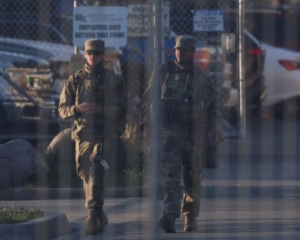Hospitals across the United States are facing a critical staffing challenge as newly matched international medical residents encounter delays in obtaining visas, a direct result of recent travel and immigration restrictions under the Trump administration.
According to a report, many foreign doctors who were scheduled to begin their U.S. residency programs this month are now stuck abroad. After years of rigorous training and matching into competitive U.S. hospitals, their entry into the country is being held up by what should be a routine step—securing a visa.
The exact number of affected residents is unclear, but several international physicians interviewed said they were unable to begin their training due to visa holdups. One Afghan doctor, who holds permanent residency in Canada and was matched with the University of Pittsburgh Medical Center in Harrisburg, shared her frustration, saying, “I don’t want to give up, but the situation also seems so helpless.”
The disruptions are particularly troubling for hospitals in rural and underserved areas. These facilities often rely heavily on international medical graduates to fill crucial roles. Many of these doctors work in specialties that are in lower demand among U.S.-trained physicians, such as internal medicine, and often serve in regions where recruiting local doctors is difficult.
While a temporary pause on J-1 visa interviews was lifted in mid-June, the backlog and bureaucratic delays continue to affect many candidates. A national nonprofit overseeing the residency matching process said the visa situation is beginning to improve, but the timing is problematic for many hospitals and incoming residents.
Two medical graduates in India told reporters that, even after the J-1 hold was lifted, they were still unable to secure interview appointments at U.S. embassies. Another incoming doctor from Egypt has a visa interview scheduled for mid-August but is concerned her hospital may not be able to wait.
The delays come at a time when the U.S. is bracing for a long-term physician shortage. The Association of American Medical Colleges projects a shortfall of doctors in the coming decade, with international medical residents playing a key role in addressing that gap. This year, more than 6,600 foreign-born residents were matched into U.S. programs—a record high. An additional 300 international physicians were placed to fill unclaimed residency spots after the primary match process ended.
Donna Lamb, president of the National Resident Matching Program, emphasized the importance of these international doctors to the broader U.S. healthcare system. “It’s not just that they’re coming in and they want to work in big, flashy centers on the coast,” Lamb said. “They’re truly providing health care for all of America.”
Lamb noted that international residents often go where U.S. graduates choose not to, including rural hospitals, public clinics, and specialties in primary care. Their absence due to visa issues may leave many communities without access to essential health services.
The Trump administration’s broader immigration and visa policies continue to face criticism for their unintended consequences across sectors. For hospitals already strained by shortages and the lingering effects of the pandemic, losing access to trained medical residents is not only inconvenient—it’s a public health concern.
As the delays persist, experts and hospital administrators are urging federal agencies to prioritize visa processing for incoming healthcare workers. Without faster solutions, thousands of patients in underserved areas may find themselves without timely access to care, and U.S. hospitals may continue to struggle with chronic understaffing.







